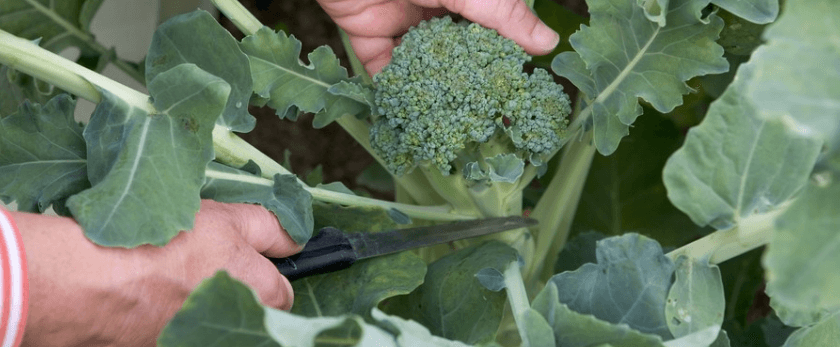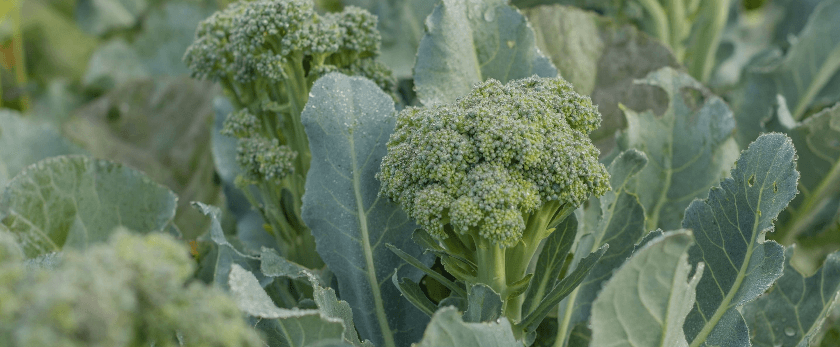Broccoli is a nutritious and versatile vegetable that can be grown in your own backyard. Not only is it a delicious addition to any meal, but it also has numerous health benefits. By growing your own broccoli, you can ensure that it is free from harmful pesticides and chemicals, and you can reduce your carbon footprint by avoiding transportation emissions. In this article, we will discuss how to grow broccoli in your garden, including caring for it, the best time to grow, and common problems you may encounter.
Caring for Broccoli
Watering
Broccoli plants require consistent moisture to thrive, but they do not like to be waterlogged. It is important to keep the soil evenly moist, but not soggy. The best way to achieve this is by watering deeply once or twice a week, depending on the weather. If you live in a hot and dry climate, you may need to water more frequently. It is best to water in the morning to allow the leaves to dry before the cooler evening temperatures.
Light
Broccoli plants prefer full sun, which means at least six hours of direct sunlight per day. However, they can also tolerate partial shade, especially in hotter climates. If you live in a region with intense heat, providing some shade during the hottest part of the day can help prevent the plants from wilting.
Soil
Broccoli plants thrive in well-draining, fertile soil with a pH level between 6.0 and 7.0. If your soil is too acidic, you can add lime to raise the pH level. If it is too alkaline, you can add sulfur to lower the pH level. It is also beneficial to add compost or aged manure to the soil before planting to provide essential nutrients for the plants.
Fertilizer
Broccoli plants are heavy feeders and require regular fertilization to produce a bountiful harvest. You can use a balanced fertilizer, such as a 10-10-10, or a fertilizer specifically formulated for vegetables. It is best to apply the fertilizer when the plants are about six inches tall and again when they start to form heads. Be sure to follow the instructions on the fertilizer package for the correct application rate.
Pruning
Pruning is not necessary for broccoli plants, but it can help promote larger heads and a longer harvest season. You can remove any yellowing or damaged leaves to allow more sunlight to reach the plant. You can also remove any side shoots that develop after the main head is harvested to encourage the plant to produce more heads.

Best Time to Grow Broccoli
Broccoli is a cool-season crop and grows best in temperatures between 60-65°F. It can be grown in both the spring and fall, but it is essential to avoid extreme temperatures. If the temperature rises above 80°F, the plants may bolt, which means they will produce flowers and seeds instead of forming heads. If the temperature drops below 40°F, the plants may suffer from frost damage.
In most regions, broccoli can be planted in early spring, about four to six weeks before the last frost date. In the fall, it can be planted about six to eight weeks before the first frost date. You can also start broccoli seeds indoors and transplant them into the garden when the weather is suitable.
Common Problems with Broccoli
Pests
Broccoli plants are susceptible to various pests, including aphids, cabbage worms, and flea beetles. These pests can cause damage to the leaves and heads, reducing the plant's overall health and yield. To prevent pest infestations, it is essential to keep the garden clean and free from debris. You can also use natural pest control methods, such as introducing beneficial insects like ladybugs or using organic pesticides.
Diseases
Broccoli plants can also be affected by diseases, such as clubroot, black rot, and downy mildew. These diseases can cause stunted growth, yellowing leaves, and rotting heads. To prevent diseases, it is crucial to rotate your crops and avoid planting broccoli in the same spot for consecutive years. You can also choose disease-resistant varieties and practice good garden hygiene.
Bolting
As mentioned earlier, broccoli plants can bolt when exposed to high temperatures. This can be frustrating, as it means the plant will not produce a head. To prevent bolting, it is essential to plant broccoli at the right time and provide adequate shade during hot weather. You can also choose heat-resistant varieties if you live in a region with intense heat.
Conclusion
Growing broccoli in your garden is a rewarding experience that can provide you with fresh and nutritious produce. By following the tips mentioned in this article, you can ensure that your broccoli plants thrive and produce a bountiful harvest. Remember to care for your plants by providing adequate water, sunlight, and nutrients, and be on the lookout for common problems that may arise. With a little bit of effort and patience, you can enjoy delicious and eco-friendly broccoli straight from your garden.










